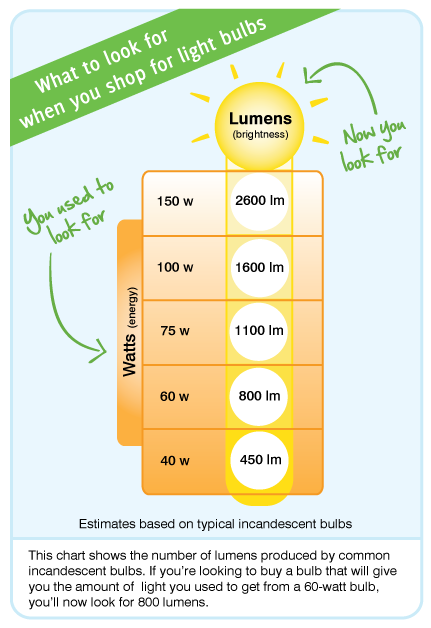If you’ve shopped for a light bulb lately, you may have noticed that things are a little different than they used to be. That’s because traditional incandescent bulbs have been replaced by newer, more energy-efficient models.
These new bulbs – like compact fluorescent lamps (CFLs), and light-emitting diodes (LEDs) – last longer and use less energy than incandescent bulbs.
But buying these new light bulb types can be confusing because it’s no longer easy to use a bulb’s wattage to figure out how bright it will shine.
Learning to Speak Lumens
Because incandescent bulbs were the go-to lighting for homes for decades, people got used to associating wattage with brightness and knew, for instance, that they needed a 60-watt bulb for their kitchen fixture.
But wattage only tells you how much energy a bulb uses, not how bright it is, and with all the different types of bulbs out there now, watts aren’t a reliable indicator of brightness anymore.
That’s where the lumen comes in. Lumens measure brightness, so you can use lumens to compare the brightness of any bulb, regardless of what type of bulb it is.
And if you remember that you preferred a 40-watt for your reading lamp, for example, there are some handy guides available to help you learn to choose bulbs by lumens instead of watts.
Take this chart from the Federal Trade Commission – it shows the number of lumens produced by common incandescent bulbs. So if you’re shopping for a bulb for your reading lamp, look for 450 lumens on the package of that LED bulb instead of looking at the number of watts.

Learn more about shopping for light bulbs at https://energy.gov/energysaver/lighting-choices-save-you-money


The watts vs. lumens chart was very informative.